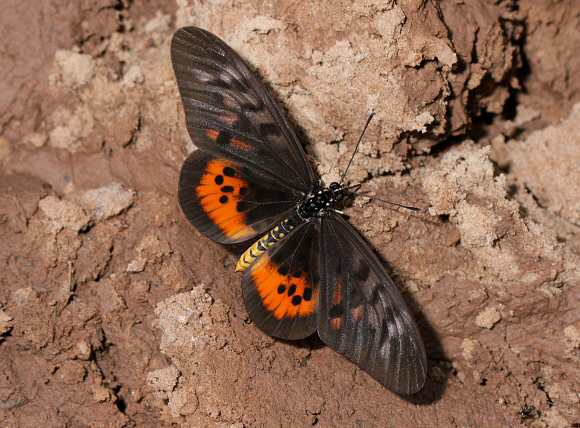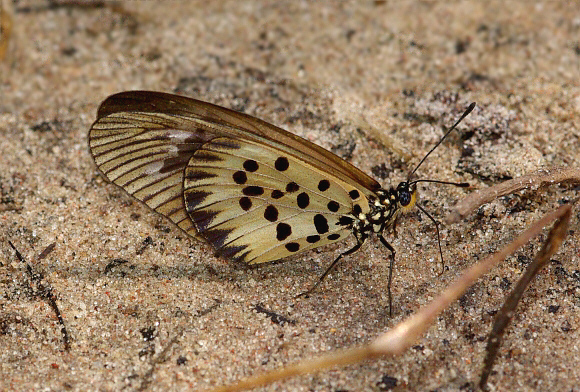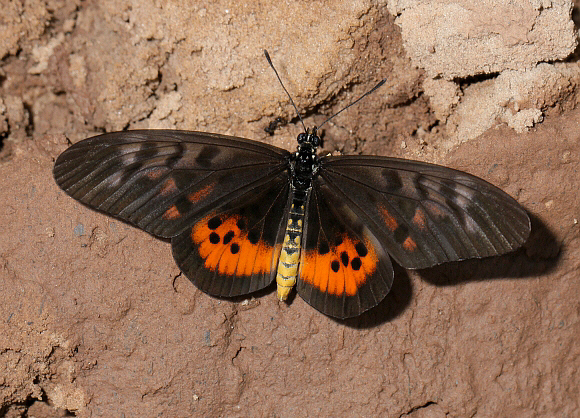
Introduction
There are 228 Acraea species, of which 223 are Afrotropical in distribution. The majority are found in the forests and savannahs of East Africa, while about 60 are found in West Africa. Beyond Africa a further 5 species occur in the Oriental region, and another is found in Australia / New Guinea. In the neotropical region there are 50 additional species, but these are normally placed in the genera Actinote, Altinote and Abananote due to differences in venation and genitalia.
All Acraea species have elongate forewings and rounded hindwings. The wings are thinly scaled and in many species are semi-transparent. The scales wear off very easily so that insects more than 4 or 5 days old have a glassy or greasy appearance. The majority of species have a predominantly brownish or greyish ground colour, marked with bands or patches of red or orange. The basal area of the underside hindwings of most species is marked with a pattern of small black spots. In many, including pharsalus, these spots also appear on the upper surface of the wings.
Acraea pharsalus is distributed from Guinea and Sierra Leone to southern Sudan and Ethiopia, and south to Angola, Zambia and Mozambique.

Habitats
This large and magnificent species can be found in a wide range of habitats including rainforest, secondary forest, savannah / woodland mosaics, riparian forest, sub-montane forest, Acacia thorn scrub and coastal grasslands, at altitudes between sea level and about 1500m.
Lifecycle
The larvae are polyphagous. Recorded foodplants include Ficus ( Moraceae ), Boehmeria, Fleurya ( Urticaceae ), Tectona ( Verbenaceae ), and Theobroma, ( Sterculiaceae ).
Adult behaviour
In lowland areas the butterflies spend much of their time high in the tree tops, where courtship and copulation takes place. In hilly or mountainous terrain they fly to hilltops instead.
Males often descend from the trees to imbibe from damp ground or the edges of puddles, along logging roads in the lowlands, and will visit carnivore dung in sub-montane areas, e.g. in Ethiopia.

